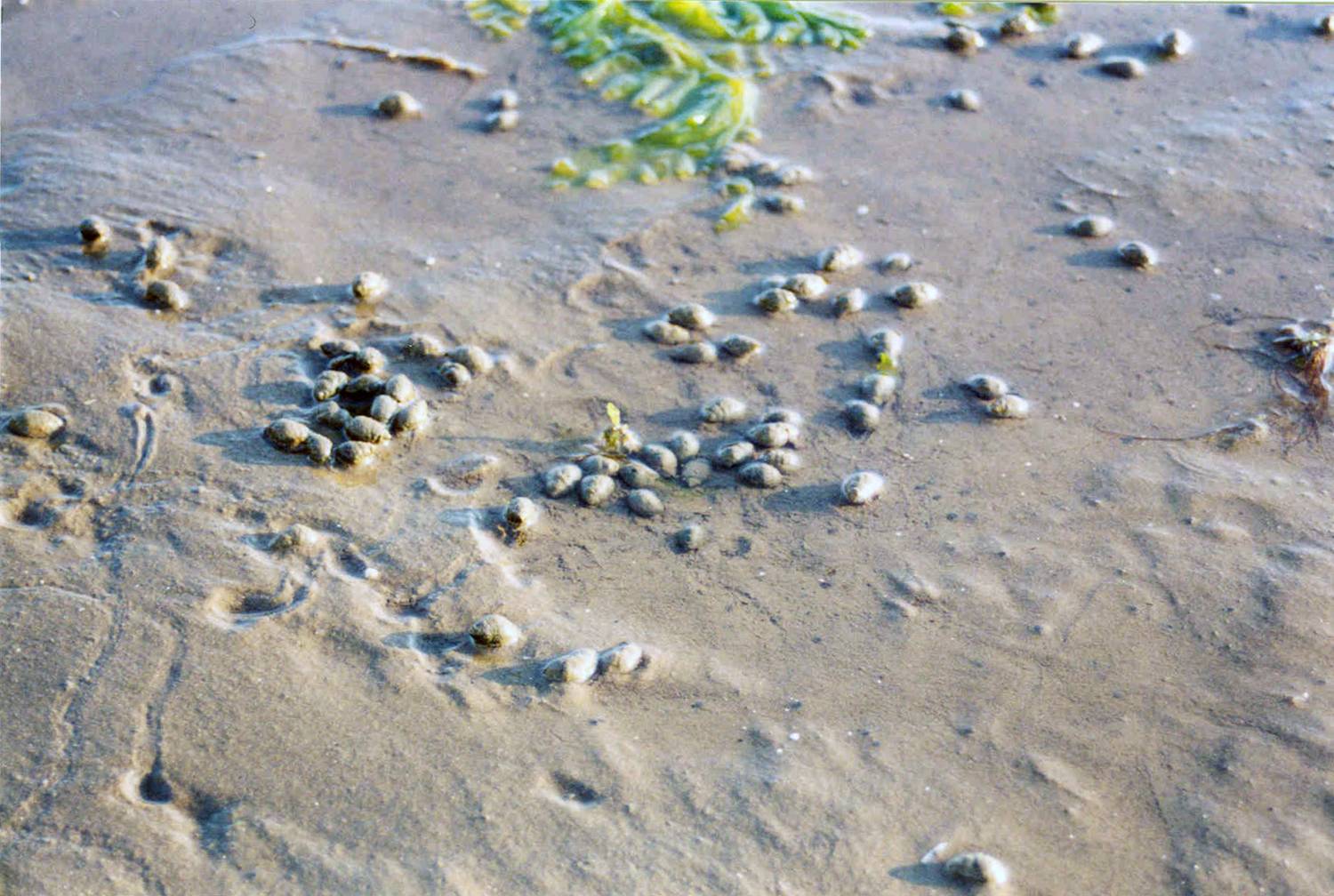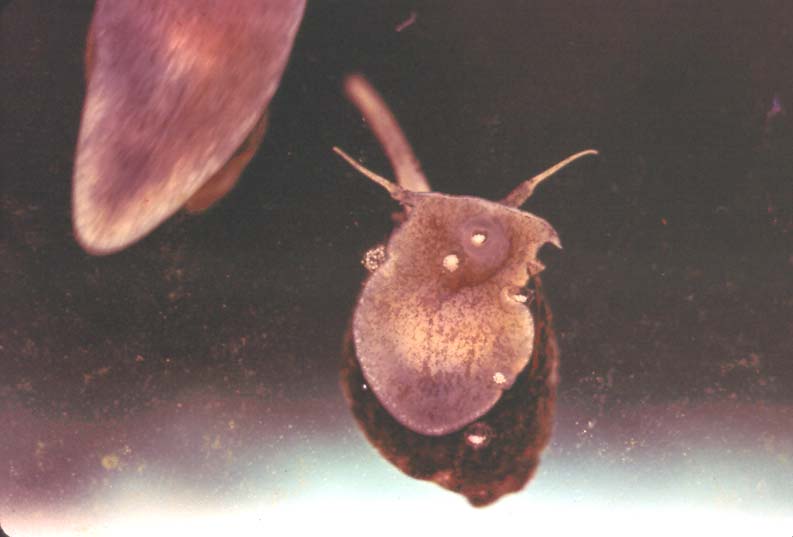
Esther Leise's Web Establishment

 |
Esther Leise's Web Establishment
|
 |
Home |
Research Projects |
Publications |
Courses |
UNCG Home Page |
Biology Home Page |
Other Links |
Opportunities for Graduate and Undergraduate Sudent Research are Described Under Research Projects
Research Interests: Research in my laboratory focuses on the neural control of metamorphosis in marine molluscs. In particular, we use the intertidal mud snail, Ilyanassa obsoleta (also called Nassarius obsoletus) as our model organism. Above and on the left you can see aggregations of these snails (the little bumps) in their natural mudflat habitat at low tide. This picture was taken at the UNC Wilmington Center for Marine Science, where I typically obtain adult animals. To the right is an adult female laying egg capsules in one of my laboratory aquaria.
My colleagues and I have studied the opposing actions of 2 major neurotransmitters, serotonin (5-HT) and nitric oxide (NO), in this system and a current project focuses on the role of the inhibitory neurotransmitter, gamma aminobutyric acid (GABA). In a previous collaboration with Dr. Lawrence Cahoon at UNCW, we learned that benthic diatoms can induce metamorphosis in this snails. Dr. Cahoon and I are continuing this collaboration and hope to enhance our earlier results with further studies. Results of past and present research projects are discussed more fully under Research Projects.
My interests in molluscan metamorphosis span a number of biological disciplines – from the ecological to the neurophysiological – and my past and current research projects reflect the interdisciplinary nature of this aspect of developmental biology. Thus, my students and I have used a variety of techniques, including pharmacological and injection experiments, immunocytochemistry, enzyme-linked immunoassays and electrophysiology. Collaborations with Dr. Mark Hens, here at UNCG have allowed us to characterize aspects of the developmental expression of nitric oxide synthase (NOS), the enzyme that produces NO. We have used several molecular methods to demonstrate that NOS expression declines during metamorphosis, supporting our hypothesis that NO production must be turned off for metamorphosis to be initiated.
My long term research goal is to understand how the larval nervous system initiates and coordinates the irreversible events of metamorphosis. Our studies also allow me to maintain my interests in the evolution of invertebrate nervous systems and developmental processes.